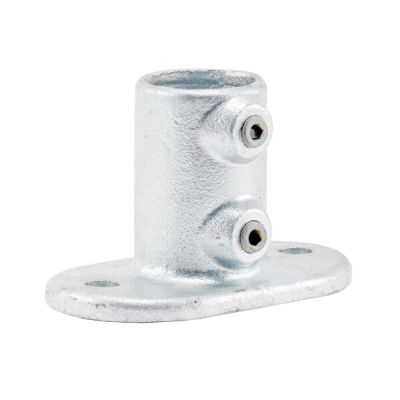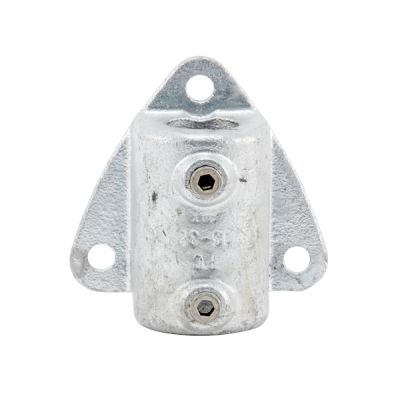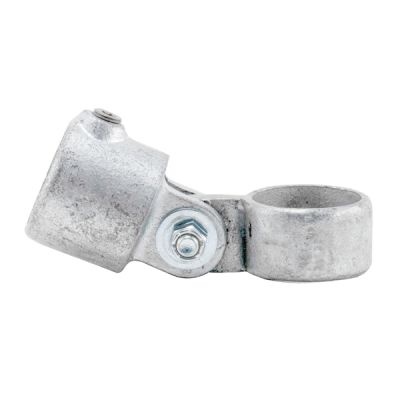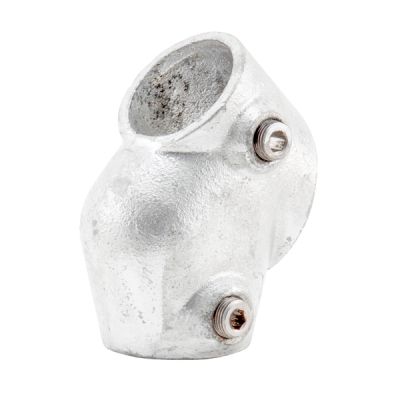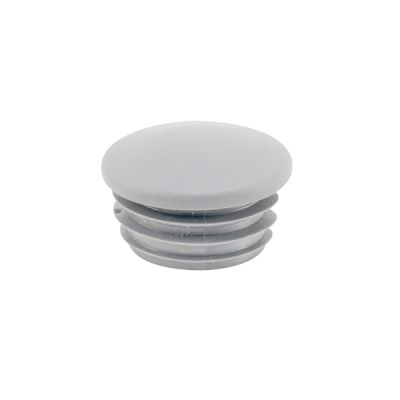Houses typically have outdoor stairs and stairs need a hand railing. There is no need to take a bunch of specific measurements and wait weeks for a fabricated iron railing. I’m here to break down all the information you’ll need to design and build your own strong and sturdy handrail for your house.
Handrail Size Pipe
When you walk up a set of stairs or ramp at a public building, can you guess what the standard size is of pipe used for that railing? It is typically 1 ¼” schedule 40. This pipe has an outside diameter of 1.66”. It is wide enough for a strong railing, while still being narrow enough to comfortably grip.
For an outdoor handrailing, I see little reason to ever go larger than this. However, in some cases it makes sense to go smaller. 1 ¼” schedule 40 pipe is the perfect size for handrails.
For a quick reference, our fittings with the “-32” on the end are designed to fit 1 ¼” schedule 40 pipe. We also offer the pipe here if you’d like to take all questions out of which pipe to purchase.
Handrail Length
How long do you want the railing to be? There really is no right answer here, it can be as long or as short as you want! All you need to do is measure.
I found the easiest way is to grab a tape measure and a friend. Hold on to the tape measure, have your friend hold onto the tape. One of you stands at the top of the stairs and the other stands at the bottom. Position the tape how you’d like it, take a look down and remember that number!
When measuring, I like to always round up. I’d rather a railing be slightly longer than too short. You can always cut the pipe shorter if need be.
Handrail Posts
How tall do you need the railing to be? Right off the bat, if you are unsure, the typical height of a hand railing is around 36” or 3 feet. This makes sorting out your post lengths really simple. However, if you are unsure, I again ask you to grab a tape measure!
Go ahead and stand by your stairs with the tape measure. Take the tape and step on it with your foot and extend it above your waist with your right hand. Pretend that the tape measure is a hand railing and put your arm where it's most comfortable. Use that measurement for your post height.
The only tricky part here is if you are needing to mount the posts anywhere not on top of the steps themselves. Meaning, if you are mounting to the side of the stairs, or on the ground beside the steps, then your measurements will need to be more specific for the desired overall height. If that is the case, get a handyman involved!
Handrail Fittings
Now that the pipe is sorted, it's time to pick out the fittings. Fittings will include flanges, handrail fittings, and end caps. Here is the breakdown of each:
Pick Your Flange
The most common flange used for mounting your handrail posts to the top of your steps is the EF12G-32 Railing Base Flange. You will need one flange for each post you plan on having!
In some cases, there is simply not enough room on the stairs to mount the railing. Here is where mounting the handrail posts to the side of the stairs is a better idea. In this case I immediately steer towards the EF15G-32 Side Mounted Wall Flange.
It would be for rare circumstances that you’d need to deviate from one of these two flanges.
Pick Your Handrail Fitting
There are two handrail fittings that I narrowed down for the purpose of simplifying your hand railing:
Option #1 - Works with any stair angle. Looks more industrial. EF45G-32 Single Swivel Kit.
Option #2 - Works with stair angles between 30-60 degrees. Looks cleaner. EF29G-32 Variable Angle Tee.
Option #1 is the simplest and will work 100% of the time. The only downside is that it looks more industrial than other options. If you are not sure what the angle is of your steps, I’d go with this option every time.
Option #2 is the better looking railing, however, you’d need to confirm your steps are between a 30 and 60 degree pitch. This can include doing a bit of math, or using a triangle calculator online.
For a quick reference, the standard step is 11” long and 7” tall. If this is your stairs, your angle is 32 degrees. Meaning if your height is shorter than 7”, or your step is longer than 11”, it is possible Option #2 will not work for your stairs.
Don’t Forget Your Caps!
Handrails made from pipe and fittings will leave pipes ends open and exposed to weather and insects. Having a bees nest in your hand railing is not ideal.
Make sure to purchase a couple caps to top off your pipes! For a two post railing, you will only need two EF65P-32 End Caps.
Below I have laid out the fittings in order of appearance in the article. We also have new handrail bundles designed to assist you at a discounted price. Using these few fittings, you can create just about any railing needed for your outdoor steps. As always, if you have any questions, shoot us a quick email at info@easyfit.com.

